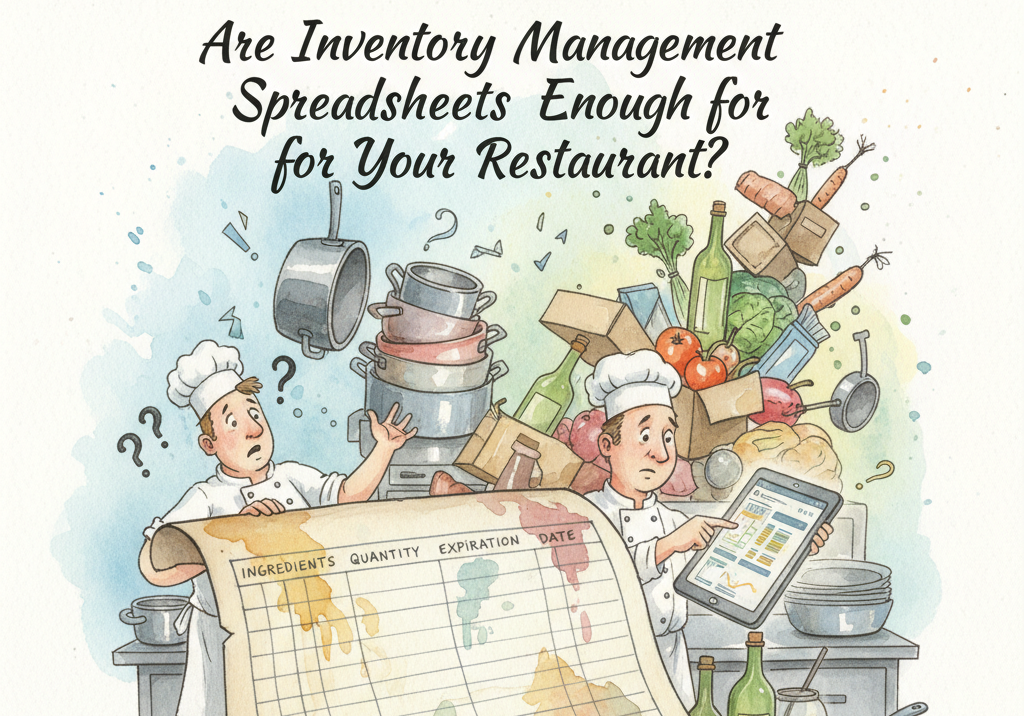Are you struggling to boost your restaurant’s revenue in today’s fast-paced business landscape? Look no further! This blog post will show you how to transform your restaurant supply chain into a revenue-generating powerhouse through responsive management. Get ready to discover practical strategies to enhance real-time data monitoring, improve stakeholder collaboration, leverage cutting-edge technologies, and strengthen supplier relationships. By the end, you’ll have the tools to make your supply chain more agile, adaptable, and profitable. Let’s dive in and unlock the revenue-boosting potential of responsive supply chain management!
Implement Real-Time Data Monitoring
To begin with, real-time data monitoring is essential for identifying potential bottlenecks or issues in the restaurant supply chain. Utilize advanced analytics and software solutions to track key performance indicators, such as inventory levels, production efficiency, and delivery times. By continuously monitoring data, companies can quickly identify problems and take corrective actions to ensure smooth operations and timely delivery of products.
Enhance Communication and Collaboration
Effective communication and collaboration among all stakeholders in the restaurant supply chain are paramount for achieving responsiveness. Implementing collaborative platforms and tools can streamline communication between suppliers, manufacturers, distributors, and retailers. Shared access to real-time information and updates enables better coordination and faster decision-making, ultimately leading to improved efficiency and customer satisfaction.
Embrace Technology and Automation
Investing in technology and automation can significantly enhance the responsiveness of the supply chain. Automation tools such as robotic process automation (RPA), artificial intelligence (AI), and Internet of Things (IoT) devices can optimize operations, reduce human error, and accelerate processes. By embracing these technologies, companies can improve productivity, reduce lead times, and meet customer demands more effectively.
Establish Strong Supplier Relationships
Building strong relationships with suppliers is key to ensuring a responsive and reliable supply chain. Collaborate closely with suppliers to establish clear communication channels, set performance metrics, and address any potential issues proactively. By fostering trust and transparency with suppliers, companies can secure a stable supply of high-quality materials and components, ultimately leading to improved product quality and customer satisfaction.
Optimize Inventory Management
Responsive restaurant supply chain management also requires a strategic approach to inventory management. Implement demand forecasting techniques and leverage data analytics to accurately predict fluctuations in customer demand. This allows companies to maintain optimal inventory levels, reducing the risk of stockouts or excess inventory, and ensuring timely fulfillment of orders.
Enhance Logistics and Transportation
Streamlining logistics and transportation operations is crucial for a responsive restaurant supply chain. Utilize transportation management systems (TMS) and route optimization tools to optimize delivery routes, reduce transit times, and minimize transportation costs. Additionally, consider diversifying transportation modes and exploring alternative delivery options, such as last-mile delivery services, to enhance flexibility and responsiveness.
Foster a Culture of Agility and Adaptability
Cultivating a culture of agility and adaptability within the organization is essential for maintaining the restaurant’s supply chain. Encourage cross-functional collaboration, empower employees to make timely decisions, and foster a mindset of continuous improvement. By creating an environment that embraces change and values responsiveness, companies can better navigate market fluctuations and meet customer expectations.
Measure and Continuously Improve
Regularly measure the performance of the responsive supply chain and identify areas for improvement. Utilize key performance indicators (KPIs) such as on-time delivery, order fulfillment rate, and customer satisfaction to track the effectiveness of the system. Continuously analyze and refine the supply chain processes to enhance responsiveness and drive higher revenues.
Now you’re equipped with the tools to transform your supply chain into a revenue-generating powerhouse. You’ve learned how to monitor your data in real time, streamline communication with your suppliers and stakeholders, and leverage technology to optimize operations. You’ve also discovered the importance of building strong relationships with your suppliers and fostering a culture of agility and adaptability within your organization.
Now, it’s time to put these strategies into action. You have the power to revolutionize your restaurant supply chain and unlock its full potential. By implementing these restaurant supply chain management techniques, you’ll be able to better meet the evolving demands of your customers, reduce waste and costs, and increase your bottom line.
So, what are you waiting for? Take the first step today and start optimizing your restaurant supply chain for higher revenues.
[wpcode id=”2221″]



